Spare a thought for the middle of the marketing funnel. It’s like the middle child, watching as its siblings get all the praise.
At the top of the funnel, we’re generating high-quality leads, and everyone wants more of those.
And at the bottom of the funnel, we’re closing the deal. Earning and burning. Snapping necks and cashing checks. That’s where all the glory happens.
But just because our attention is often focused on the extremities of the marketing funnel, that doesn’t make the middle any less important.
Today, I’ll focus on the best five mid-funnel marketing strategies to help you move more prospects further down your funnel.

The 5 Best Mid-Funnel Marketing Strategies
2. Send Curated Product Emails
What Do We Mean by “Mid-Funnel”?
There are a lot of different versions of marketing funnels out there.
In part, that’s because we marketers love to be obtuse. But more importantly, it’s because the user journey inevitably varies from one brand to another.
For a fast fashion brand with a social commerce store, the whole journey might take a matter of seconds and involve no more than one or two touchpoints. Whereas a high-end online furniture store might have dozens of touchpoints across a user journey spanning weeks or months. For those two companies, the marketing funnel will look very different.
That said, here’s a helpful visualization of a “typical” funnel, courtesy of Single Grain:
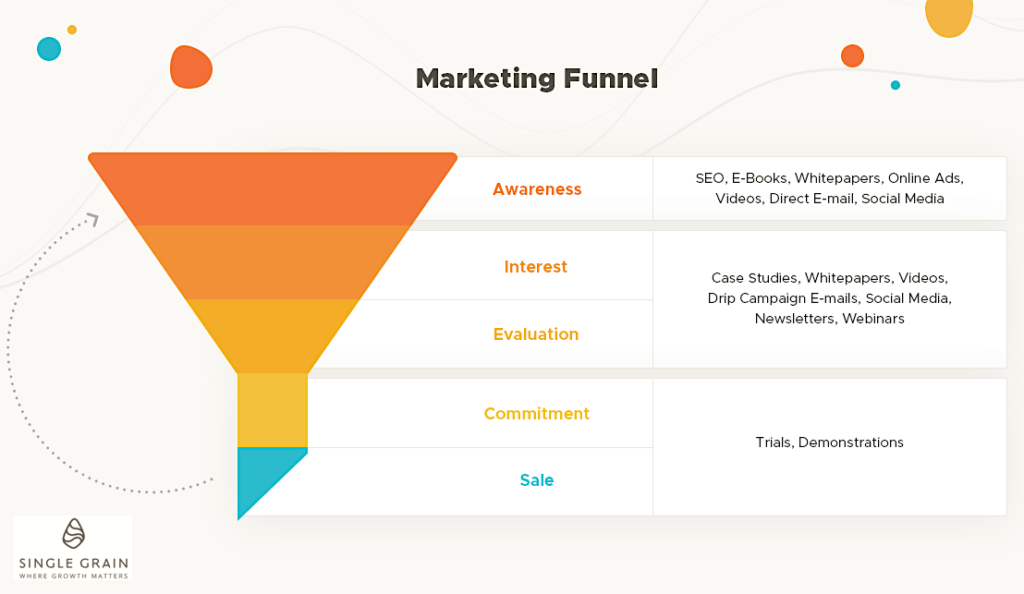
Funnily enough, when we use the phrase “mid-funnel”, we’re referring to those bits in the middle—the “Interest” and “Evaluation” stages:

When they’ve reached these stages, a lead is already somewhat aware of:
- Your brand;
- The “problem” they’re facing; and
- The fact that your product can potentially solve that problem.
So you’re no longer trying to get your lead’s attention. Instead, you’re trying to demonstrate that you’re more than a “potential solution”—you’re the perfect solution.
That means hitting them with persuasive content that discusses their “challenge” in greater depth and relates it to your product’s features and benefits.
As Single Grain’s elegant graphic demonstrates, that content can come in a lot of different flavors, from social posts and email drip campaigns, to whitepapers and case studies.
Generating leads and closing the deal can take seconds or minutes—all it needs is a well-timed social ad. But that middle phase might involve the customer seeing numerous ads and pieces of content over an extended period. So no wonder brands find mid-funnel marketing hard.
Indeed, 56 percent of marketers surveyed by DemandGen said their lead nurturing performance is poor/inadequate or in need of improvement, while 84 percent described the process as challenging or very challenging.
To help make the whole process a little less painful, I’ve looked at five mid-funnel marketing strategies inspired by brands that are getting it spot on.
1. Use Social Proof
Social proof, a term coined by the esteemed social psychologist Robert Cialdini, is the phenomenon whereby people replicate the actions of others.
As brands, we can display social proof in various ways, such as:
- Customer reviews
- Media reviews
- Testimonials
- Case studies
- Industry awards
- Accreditations
Whichever format you choose, social proof is an extremely valuable tool for nurturing leads and moving them further down the marketing funnel.
So it’s in your best interest to display social proof as far and wide as possible. Here’s how that might look.
i. Social Proof in Email Marketing
If you’re looking for channels to demonstrate how much the whole world loves your products, your email list is a great starting point.
Everyone on that list has given you their details, so they have at least some level of interest in what you do.
Now’s your chance to show just how smart they were to search you out in the first place. That means adding some social proof-themed emails to your regular rotation of promos and product launches.
Outdoor furniture brand Outer shows just how to do this:
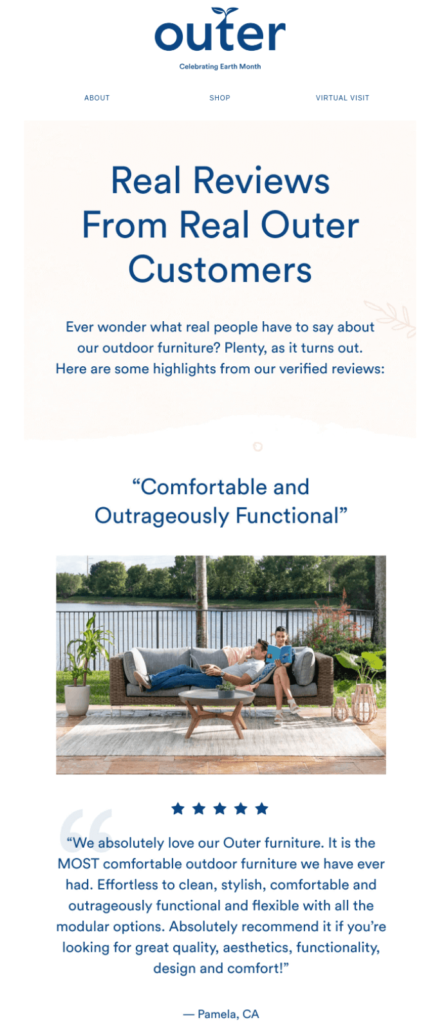
Source: Really Good Emails
That image is just a snapshot—the full email contains no fewer than four separate (and equally glowing) customer reviews, alongside pictures of the products in action. All of which makes it wonderfully easy for the recipient to picture their own yard or garden decked out with beautiful Outer furniture.
For the icing on the cake, the email closes with a strong call to action (CTA) that compels users to “see for themselves” by taking advantage of Outer’s 14-day free trial:
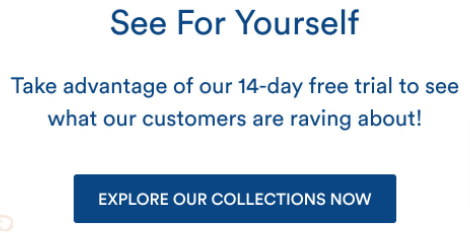
ii. Social Proof in Social Media Marketing
Not everyone who follows your brand’s social profiles will be a potential customer. Some will be colleagues and industry peers. Some of them are likely only following you so they can steal your brilliant content ideas.
However, it’s safe to say that a decent chunk of your social following is potentially interested in buying your products, but isn’t 100 percent convinced yet.
In other words, they’ve reached that mid-funnel stage. It’s up to you whether they stay there indefinitely or continue their journey.
Sticking with the Outer theme, let’s see how to move those leads further down the funnel:
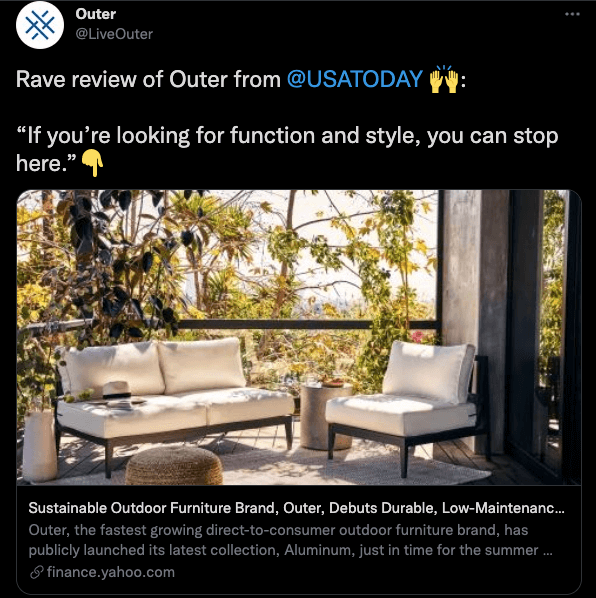
This tweet is a good example of amplifying positive media coverage about your products. When a trusted, impartial third party praises what you do, their words carry a lot of weight, so it’s definitely worth shouting about.
Here’s another example, this time from Facebook:
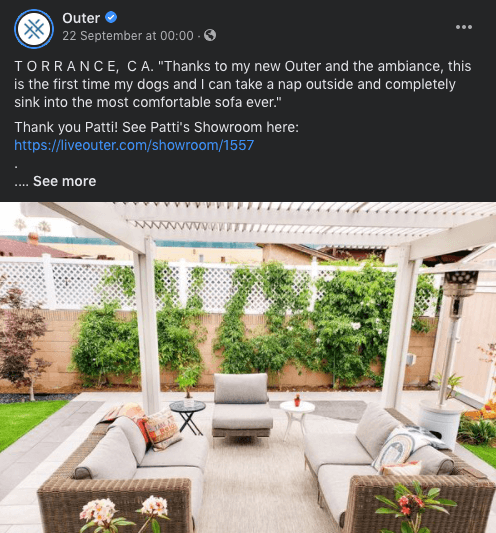
This time, Outer is leveraging a real-world customer success story. It’s an extremely positive review—“Most comfortable sofa ever”—made all the more impactful by quality imagery.
iii. On-Site Social Proof
Of course, if you’re taking the time to demonstrate social proof to your social followers and email subscribers, you should absolutely be doing the same on your website.
By the point a potential customer lands on your site, they’re well on their way to the bottom of the marketing funnel. They want to take a closer look at your products, and perhaps learn a little more about who you are, what you do, and if you’re “legit”.
Pleasingly, Outer continues the good work on its website. Halfway down the homepage, you’re presented with a banner highlighting all the big-name brands who love Outer products:

For shoppers who want to do their research and find out what existing customers really think about Outer, there’s a whole review-based landing page:
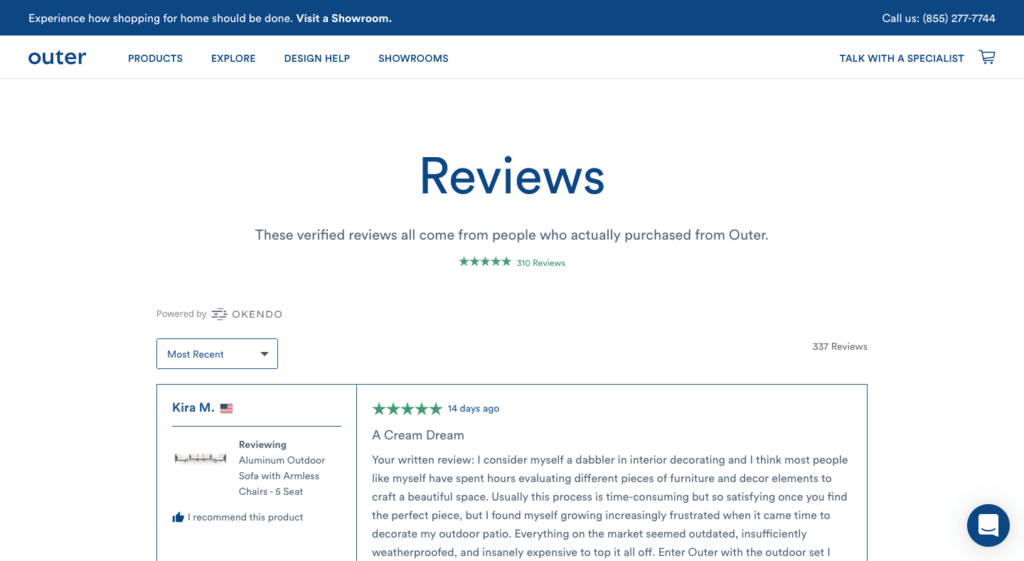
And when you click through to a product page, you can see review scores for that specific product:
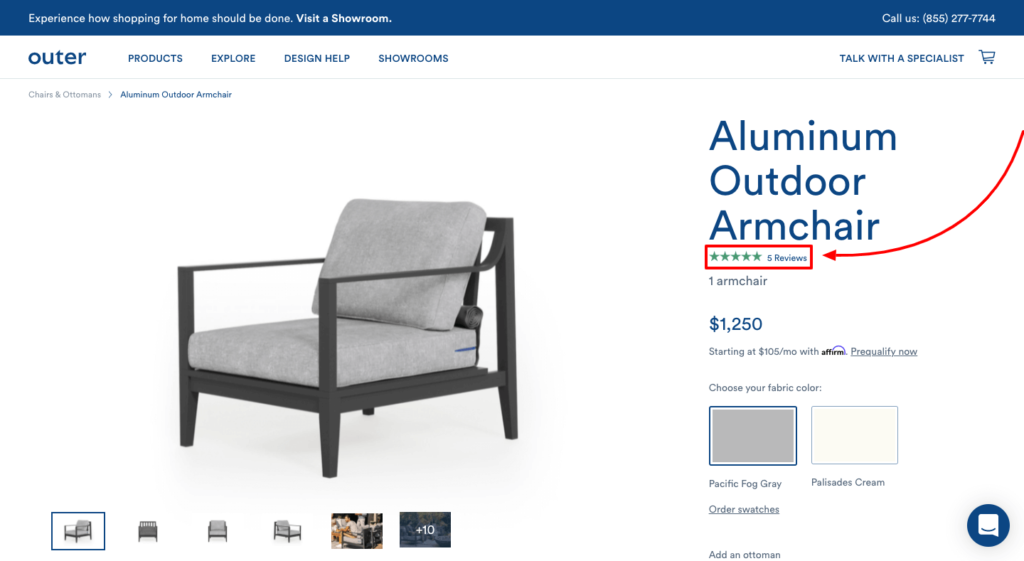
In short, there’s plenty here to give would-be customers the confidence to buy.
2. Send Curated Product Emails
We all know email marketing works. According to Campaign Monitor, it offers an average return of $42 for every dollar spent.
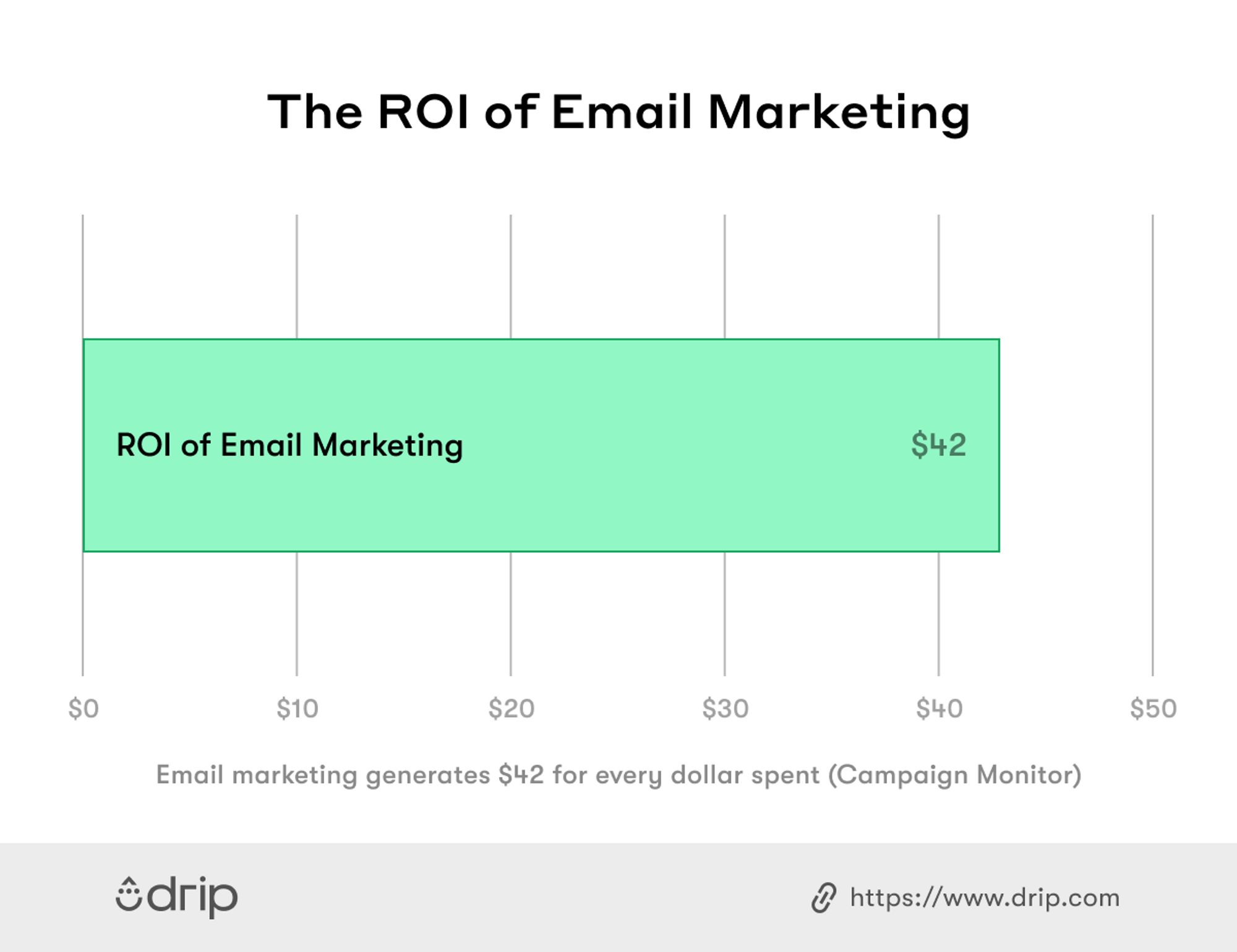
So it’s no surprise that brands love it so much, with 35 percent of marketers sending their customers three to five emails per week.
However, that doesn’t mean email marketing is a guaranteed moneyspinner; there’s still plenty of ways you can get it wrong.
Looking specifically at the mid-funnel stage, you definitely don’t want to be too salesy. Push your products too hard, too often and your customers will start smashing that unsubscribe button faster than you can say “Buy now!”.
After all, you’re not sending these emails for fun—you’re doing it to make money. That inevitably means mentioning your products a lot.
One way around this is to send curated product emails. Sharing seasonally-themed collections and lists of bestsellers is a fantastic way to show how brilliant your products are without shoving them down your subscribers’ throats.
Jewelry brand Local Eclectic gets it right here:
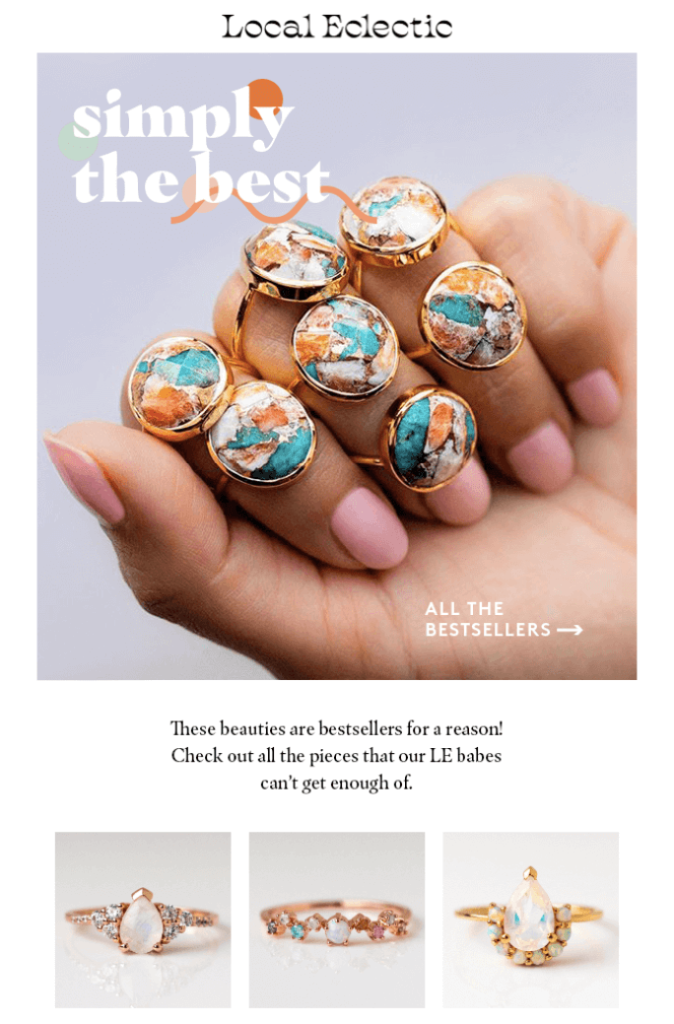
Source: Really Good Emails
Sure, it’s ultimately just another email featuring a big list of products. But describing them as “bestsellers” makes it feel like Local Eclectic is giving its audience helpful guidance rather than simply urging them to buy, buy, buy.
There’s an additional advantage to the whole “bestsellers” approach—it’s another example of social proof. By highlighting your top sellers, you’re effectively saying to your email subscribers: “Everyone else has one of these, so you should buy one too.”
3. Explain How Your Product Works
Product explainers are extremely common in B2B marketing, which is hardly surprising—if you’re selling some super complex tech solution, you can’t expect your buyers to understand what it does and how it works straight off the bat.
Explainers are comparatively underused in the B2C world, simply because the products are a lot easier to understand. If I’m shopping around for a new pair of jeans, I probably don’t need to consult an infographic or a two-minute video to figure out what they do.
However, there are some B2C products that warrant further explanation.
If you’re in an emerging niche, or you’ve created something that’s new, innovative, or just hard to picture, you should take the time to show off all those smart features and make sure potential customers understand the value you offer.
The middle of the marketing funnel is where you should be doing it.
Because it’s the point when people are figuring out what you’re about and are actively comparing you to other options.
Smart storage case company Everything Orgo gets it right.
Its storage cases are deceptively small because they contain multiple fold-out compartments, offering more storage space than immediately meets the eye.
Product photography alone doesn’t really do it justice; you need to see it in action. That’s why it created an explainer video to demonstrate how everything works:
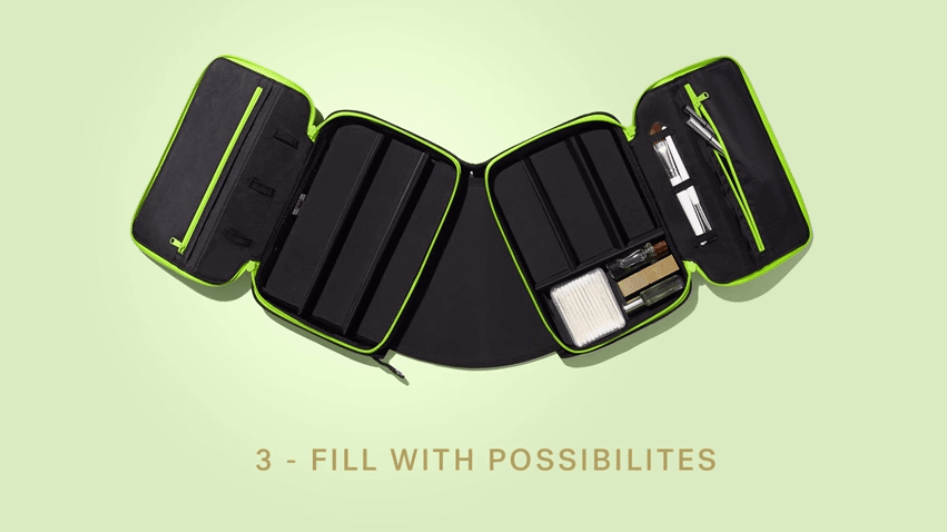
There are two big advantages to the video format:
- It’s (obviously) very visual, which makes it easy for would-be buyers to understand exactly what a product does.
- It’s extremely versatile. Explainer videos work well on your website, but they can be equally effective on social media, and you can even incorporate them in your email marketing.
4. Give People a Helping Hand
Explainer videos are super useful for the right kind of product. But what if the “thing” you’re selling isn’t just a single product? What if it’s more like a concept—something that dramatically alters the way we approach a common problem or challenge?
That’s what Dollar Shave Club does. It’s changed the process of shopping for shaving products from an extremely transactional “I’ll buy one when I need one” approach to a subscription-based model.
That whole subscription approach is kind of confusing, right? What do I get for my money? And how does Dollar Shave Club choose which products to send me?
Obviously, it has a whole FAQ section to answer all those common questions. But it’s also come up with a far more engaging method to demonstrate the value offered to subscribers—a quiz that offers personalized recommendations based on your shaving preferences:
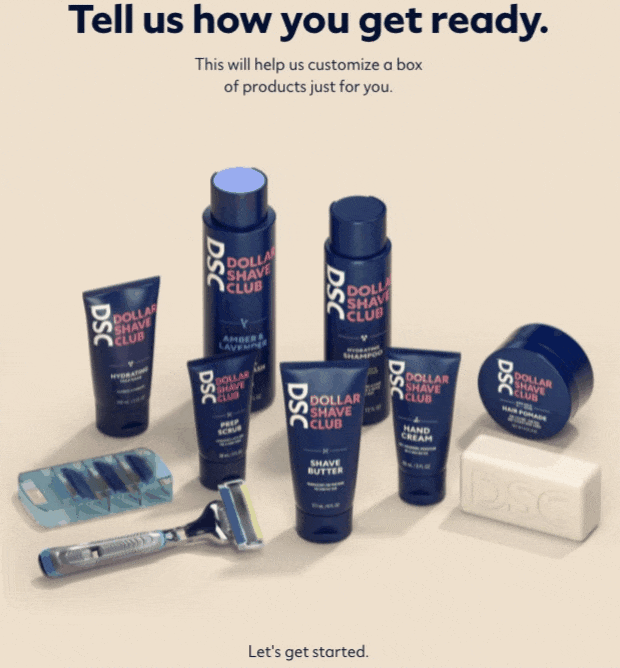
Rather than forcing you to read a 1,000-word explainer or watch a video full of other people telling you how great it is, Dollar Shave Club communicates its value proposition while effectively allowing you to close the deal yourself.
Answer a handful of questions and it’ll create a subscription box tailored to your requirements:
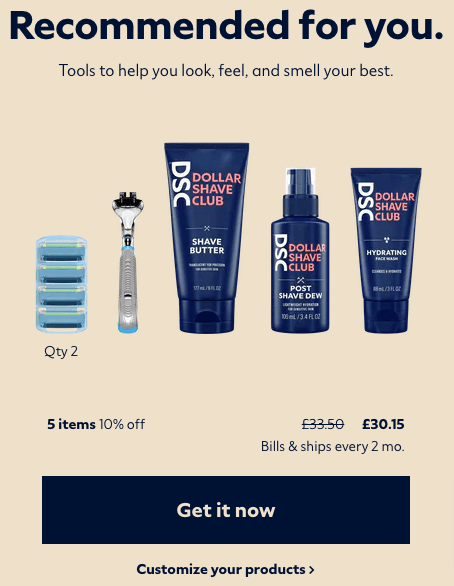
And because you’ve essentially done all the presale qualification yourself, you’re less likely to quibble at the price.
5. Align Your CTAs to the Marketing Funnel
Calls to action: they’re just a handful of words. But those words are important.
In fact, according to Ellie Mirman, VP of Marketing at fashion e-commerce brand Toast, emails with a single call to action can increase clicks by 371 percent and sales by 1,617 percent.
But remember: we’re talking about mid-funnel marketing here. At this stage, not everyone will be ready to move to the bottom of the funnel and buy; others still need a little gentle persuasion.
If all your CTAs are yelling “buy now” or “add to cart”, they’re unlikely to engage a mid-funnel audience.
Tailoring your CTAs to the marketing funnel means getting into the head of customers at each stage; figuring out precisely what information they’re looking for. What would compel them to click?
To show you how it’s done, let’s take another look at Dollar Shave Club’s quiz. At this point, DSC isn’t trying to sell anything. It’s trying to engage and educate the customer. So a purchase-related CTA just isn’t relevant.
Instead, Dollar Shave Club came up with this:
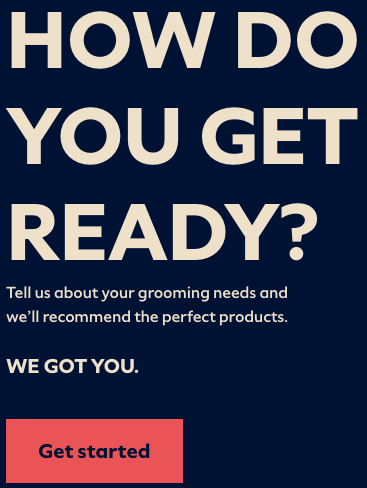
It’s perfect because there’s no hard sell here—it’s purely informational. That makes it feel like a low-pressure, low-friction click.

Conclusion
Targeting mid-funnel users isn’t always the most glamorous part of the marketing funnel.
But things like case studies, reviews, and explainer videos are the real nuts and bolts of your marketing strategy.
If you don’t get those elements right, your marketing funnel will be decidedly… leaky. However many leads you generate, or however brilliant your product is, you won’t sell much with a leaky funnel.



